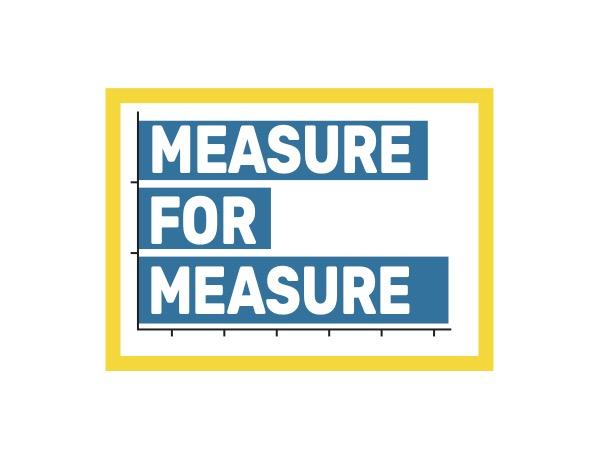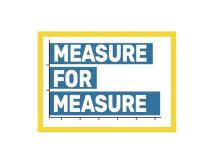Arts and Well-Being Data for a New Policy Era

Later this month, the NEA and the Bureau of Economic Analysis will release statistics on how the arts and cultural economy fared in 2021, roughly a year after COVID arrived in the U.S. The new numbers will tell us which industries have recovered, which are still ailing, and which remain surprisingly robust.
The health metaphor is apt, if predictable: one of the quickest ways we have of assessing the well-being of a sector, or even a nation, is by taking its economic pulse. At the same time, it’s obvious that changes to GDP are not, and cannot be, the sole measure of economic and social progress.
Ten years ago, in the United States, the National Academies weighed in on the feasibility of using “subjective well-being” measures, such as happiness scores, to help guide public policy decisions. Four years earlier, Amartya Sen and Joseph Stiglitz, each a Nobel laureate in economics, had drafted a report on expanding traditional measures of economic and social development; the report had been commissioned by the government of France. The next year, across the Channel, the UK’s prime minister asked the country’s Office of National Statistics to begin using subjective well-being measures to supplement GDP, in accounting for levels of prosperity.
Those were heady days for the pursuit not of happiness, but of happiness-related metrics that could be used alongside existing indicators of health and productivity. Yet the above-mentioned National Academies report advised caution, ruling that subjective well-being data (of the hedonic variety, drawing from day-to-day experiences) “are most relevant and valuable for informing specific, targeted policy questions, as opposed to general monitoring purposes.” Otherwise, “the panel [was] skeptical about the usefulness of an aggregate measure intended to track some average of an entire population.”
Rather than a sweeping introduction of these metrics into federal statistical systems, the National Academies report urged adding questions about subjective well-being (SWB) only to “surveys where a strong case for subject-matter relevance can be made” and where “SWB links have been well researched and where plausible associations to important outcomes can be tested.”
Even if data on self-reported well-being are generally absent from government reports of the nation’s welfare, these methods can enrich our understanding of the value of specific community interventions. The NEA is supporting analysis of subjective well-being data, among other sources, to guide the evaluation of a micro-grants program run by Civic Wellbeing Partners in Santa Monica, California.
Originating with the city’s now-defunct Office of Civic Wellbeing, the organization got seed money from Bloomberg Philanthropies to launch “The Wellbeing Project,” which deploys a measurement tool (an index) using data from city government offices, a city resident survey, and social media.
The domains of measurement include: “community”; “place + planet,” “learning,” “health,” and “opportunity.” Further, by teaming with the Institute of Collective Wellbeing in Madison, Wisconsin, the organization is mapping U.S. place-based initiatives that aim to foster “collective well-being,” while affirming “racial equity as a core value,” according to the Civic Wellbeing Partners website.
Because the organization seeks not only to track place-based well-being, but also to support local well-being interventions, Civic Wellbeing Partners is offering microgrants (up to $500 each) to teams in Santa Monica and West Los Angeles. Arts and cultural activities figure in many of the projects already funded. With support from a NEA research grant, a Brookings Institution team—led by Carol Graham, author of such books as Happiness for All: Unequal Hopes and Lives in Pursuit of the American Dream (2017)—will evaluate arts-focused microgrant projects, with the additional goal of preparing a toolkit for well-being measurement in the arts.
Not far from Santa Monica, the NEA Research Lab at the University of California, Los Angeles, has been piloting an app called the Arts Impact Measurement System (AIMS), permitting researchers to work with performing arts organizations in assessing how psychological metrics of health and well-being line up with audience-reported experiences. Last year, the Lab published a study, using this device, showing a boost in positive attitudes, among audiences who viewed a web-streamed opera (Veteran Journeys), toward interacting with veterans who have experienced post-traumatic stress and unstable housing issues.
As can be seen from the Brookings and UCLA examples, contemporary efforts to measure the arts’ relationship to self-reported well-being are not limited to factors bearing on individuals’ decisions about how they would like to spend their leisure time, or about how they rate life satisfaction. Instead, well-being outcomes associated with arts programs are equally about progress in reducing barriers to social and cultural engagement.
From a broader perspective, this is not surprising. For instance, although “emotional well-being” is the topic of a “high-priority” set of research networks that the National Institutes of Health has established, it is clear that social and cultural factors, no less than the psychological and neurobiological sciences, are highly germane to those studies.
Well-being measurement, in other words, does not exist in a vacuum. Last summer, the D.C.-based nonprofit organizations New America and the Washington Center for Equitable Growth partnered with the U.S. Departments of Commerce and Treasure to organize a 14-week “sprint” for teams to build public-facing tools using open data to measure household or community well-being. (The NEA had contributed several arts-related datasets for the sprint teams to consult.)
A 2022 problem statement for the sprint called for “new indicators that capture dimensions of well-being beyond economic indicators”—for example, “new economic opportunities for residents, public spaces that contribute to good mental and physical health, and/or investments that prioritize equity.” From that description alone, it’s easy to see how much the concept of well-being measurement has evolved beyond individual reports of happiness or life satisfaction. In addition to assessing emotional states, such metrics increasingly extend to geospatial data.
Contributing to this trend, on Feb. 14, the U.S. Census Bureau released the first installment of the National Experimental Wellbeing Statistics series, a refined data model estimating poverty and income levels. It’s just another sign that systematic approaches at tracking well-being, for an entire population, must rely on multiple data sources: in this instance, surveys and administrative records alike. In the arts—as with all other sectors now grappling with issues of equity—more comprehensive metrics of well-being, in response to a program or intervention, will mean accounting for demographic and socioeconomic variables that may promote different outcomes by subgroup. In this sense, well-being measurement is more multidimensional than ever.
Sunil Iyengar directs the Office of Research & Analysis at the National Endowment for the Arts





